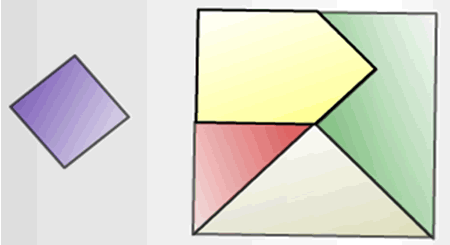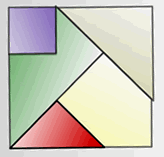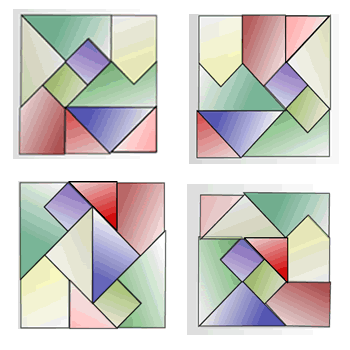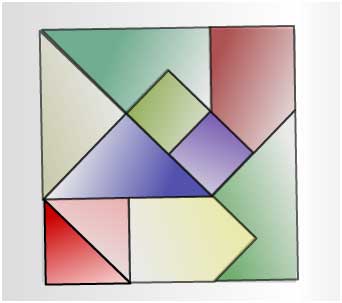Or search by topic
Number and algebra
Geometry and measure
Probability and statistics
Working mathematically
Advanced mathematics
For younger learners
Square Tangram



- Problem
- Getting Started
- Student Solutions
- Teachers' Resources
This is much more tricky than it looks, isn't it?! Well done to those of you who managed to make a square using four or five pieces. Callum from Brookside Primary, Becky from Holy Cross C of E School, Jonah from Great Wilbraham Primary and Max from Eastwood Primary made a square with four pieces. Here is Becky's solution which correctly leaves out the small square:

Dafydd, also from Holy Cross, and Rowley from Culford Primary solved the five-piece challenge. This is Rowley's image:

Mel from Christ Church Grammar, Rowley from Culford Primary, Eleanor from Great Wilbraham Primary, Callum from Castle Carrock Primary and Shiv from Sanskaar Valley, Bhopal in India, all sent in solutions to the ten-piece challenge. In fact, between them they managed to come up with four different ways of solving it! Well done everyone!

A while later, we received another solution from Hannah from Diocesan School for Girls, Auckland, New Zealand. With the help of her older brother, Hannah came up with this additional solution to the ten-piece problem:

Thank you for sending this in, Hannah.
You may also like
Cutting Corners
Can you make the most extraordinary, the most amazing, the most unusual patterns/designs from these triangles which are made in a special way?
Cut and Make
Cut a square of paper into three pieces as shown. Now,can you use the 3 pieces to make a large triangle, a parallelogram and the square again?
Square to L
Find a way to cut a 4 by 4 square into only two pieces, then rejoin the two pieces to make an L shape 6 units high.

